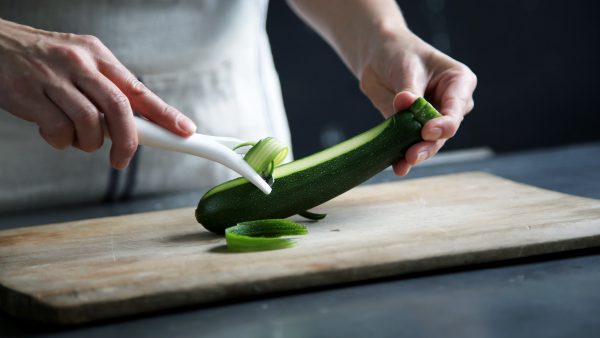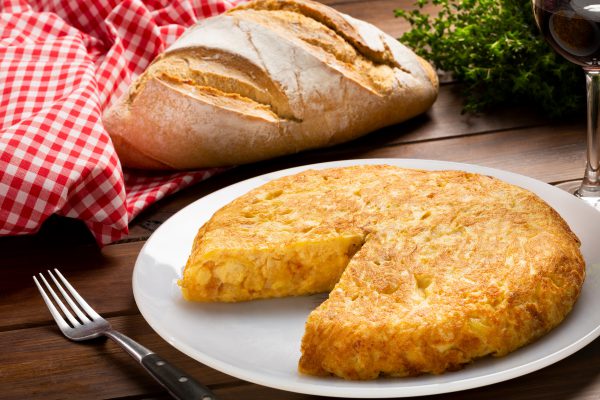Last Updated on August 13, 2023
Italian pesto comes in all sorts of shapes and colors, but most people know the delicious basil pesto. And there seems to be a reason why this recipe is almost a universal constant when talking about pesto: it’s heavenly delicious!
The basil pesto is a perfect sauce to add to pasta, sandwiches, salads, and many other dishes. This simple recipe combines fresh basil, garlic, pine nuts, and Parmesan cheese to create a rich and savory sauce that is sure to impress.
Whether you’re a seasoned cook or a beginner in the kitchen, you can whip up a batch and level up your favorite dishes.
Where Does Pesto Come From?
The name “pesto” comes from the Italian word “pestare,” which means “to pound or crush,” referring to the way the ingredients are traditionally ground together in a mortar and pestle. Italian chefs used to refer to any paste made in a mortar and pestle as pesto.
Pesto alla Genovese is a sauce that originated in the region of Liguria, Italy. Its most traditional version is made of a combination of fresh basil, garlic, pine nuts, and olive oil, but over time parmesan cheese has become an inseparable part of it — since it’s guaranteed to make your taste buds do a little happy dance.
Despite being born in Italy, the sauce has become a popular condiment all over the world. You can use it to top any dish with a little boost, like pasta, soups, stews, stir-fries, or grills.
Pesto Recipe Variations
Pesto alla Genovese is not the only form of delicious Italian pesto. Here are some of the many variations of this sauce that can be made using different ingredients.
Spinach pesto: Using fresh spinach in place of basil gives the sauce a milder and more earthy flavor.
Kale pesto: Replacing basil with fresh kale gives you a more robust flavor that’s slightly bitter.
Arugula pesto: The mild peppery flavor of fresh arugula works great for heartier dishes.
Sun-dried tomato pesto: Sun-dried tomatoes give you a more intense and concentrated flavor packed with umami.
Almond pesto: Replacing almonds in place of pine nuts gives the sauce a slightly nuttier and more delicate flavor.
Vegan pesto: You can also use nutritional yeast in place of Parmesan cheese, making it suitable for those following a vegan diet while not compromising that yeasty satisfying taste.
These are just a few examples of pesto that you can make. You can also check out the many uses of pesto article for more inspiration before experimenting with different ingredients and flavors to create your own signature pesto.
When Is the Best Time to Make Basil Pesto?
To make basil pesto you’ll need plenty of fresh basil that’s full of that sweet, fragrant aroma and bright, herby flavor. The best time for that is the summer when basil is in season and at its peak of freshness.
The warm weather also makes it the perfect time to enjoy pesto on pasta, sandwiches, and other dishes that are best served cold or at room temperature. And you can always freeze basil pesto in an ice cube tray for the times you’ll be craving it in winter.
Print
Basil Pesto (Alla Genovese)
-
Prep Time: 30
-
Total Time: 30
-
Yield: 1 1x
Description
Special equipment: Mortar and pestle
Ingredients
- 2 cups fresh basil leaves
- 1/3 cup pine nuts
- 3 medium garlic cloves, minced
- 1/2 cup extra-virgin olive oil
- 1/2 cup freshly grated hard cheese (Parmesan or Pecorino Romano)
- Salt and pepper to taste
Instructions
- Start by washing and drying the basil leaves. Then, remove the leaves from the stems and discard the stems together with any wilted or damaged leaves.
- Roughly chop the basil leaves and place them in the mortar.
- Add the pine nuts and garlic, along with a pinch of salt and a little bit of black pepper.
- Use the pestle to grind and mash the ingredients together, moving in a circular motion. Grind and mash until the basil leaves are broken down, and the ingredients are well combined.
- Gradually add the extra-virgin olive oil to the mortar, continuing to grind and mash the ingredients until they form a smooth and well-combined paste. You may need to add a little more olive oil to achieve the desired consistency.
- Once the pesto is fully ground and combined, transfer it to a serving dish or container. Stir in the grated parmesan cheese, and season the pesto with additional salt and black pepper to taste.
Notes
- Serve the pesto immediately or store it in the refrigerator or freezer for later use. To preserve its freshness, you can cover the pesto with a thin layer of olive oil before storing it.
- The ratios for this recipe are definitely adjustable. You can create different textures and flavors by playing around with the amount of cheese, oil, and pine nuts and see what you like the best.
- Remember to apply a gentle and steady hand when using a mortar and pestle. It may take some practice to get the hang of the technique, but with time and experience, you will be able to create delicious pesto and other ground foods with ease.
What to Serve Basil Pesto With?
Basil pesto is a versatile sauce that can be enjoyed with a variety of dishes. Some popular options for serving basil pesto include:
Pasta: Pesto is a classic topping for pasta, and it can be mixed into the pasta directly or served on top as a sauce. Try it with spaghetti, fettuccine, or your favorite pasta shape.
Salad: Pesto can be used as a salad dressing, adding flavor and richness to your favorite greens and vegetables. Try it on a simple salad of mixed greens, cherry tomatoes, and feta cheese, or use it to dress a more complex salad with grilled chicken, roasted vegetables, and nuts or seeds.
Sandwiches: Pesto makes a delicious spread for sandwiches, adding flavor and moisture to your favorite sandwich fillings. Try it with a turkey and cheese sandwich, a veggie wrap, or a grilled chicken panini.
Grilled vegetables: Pesto is a delicious topping for grilled vegetables, elevating the flavor of your favorite summertime treats. Try it with grilled zucchini, eggplant, bell peppers, or portobello mushrooms.
Meat or fish: Pesto can be used as a marinade or topping for meat or fish. It adds a fresh punch and a secondary flavor to your favorite protein. Try it with grilled chicken, salmon, or pork chops.
These are just a few ideas for serving basil pesto. Experiment and see what dishes you enjoy the most when topped with some delicious basil pesto!
Ready to Mash!
This classic Italian condiment is a great way to add flavor and zest to your favorite dishes. Whether you’re stirring it into pasta, spreading it on sandwiches, or using it as a marinade for grilled meats or vegetables, pesto is a versatile and tasty addition to any meal.
You can make your own homemade pesto easily with just a few simple ingredients and a set of mortar and pestle — or a food processor if you’re feeling lazy. Give it a try and elevate your culinary creations with the delicious flavors of a pesto alla Genovese.
Just make sure you have plenty of fresh basil on hand, and let your taste buds be your guide. After all, life is too short to eat bland food, so go ahead and make that pesto!











